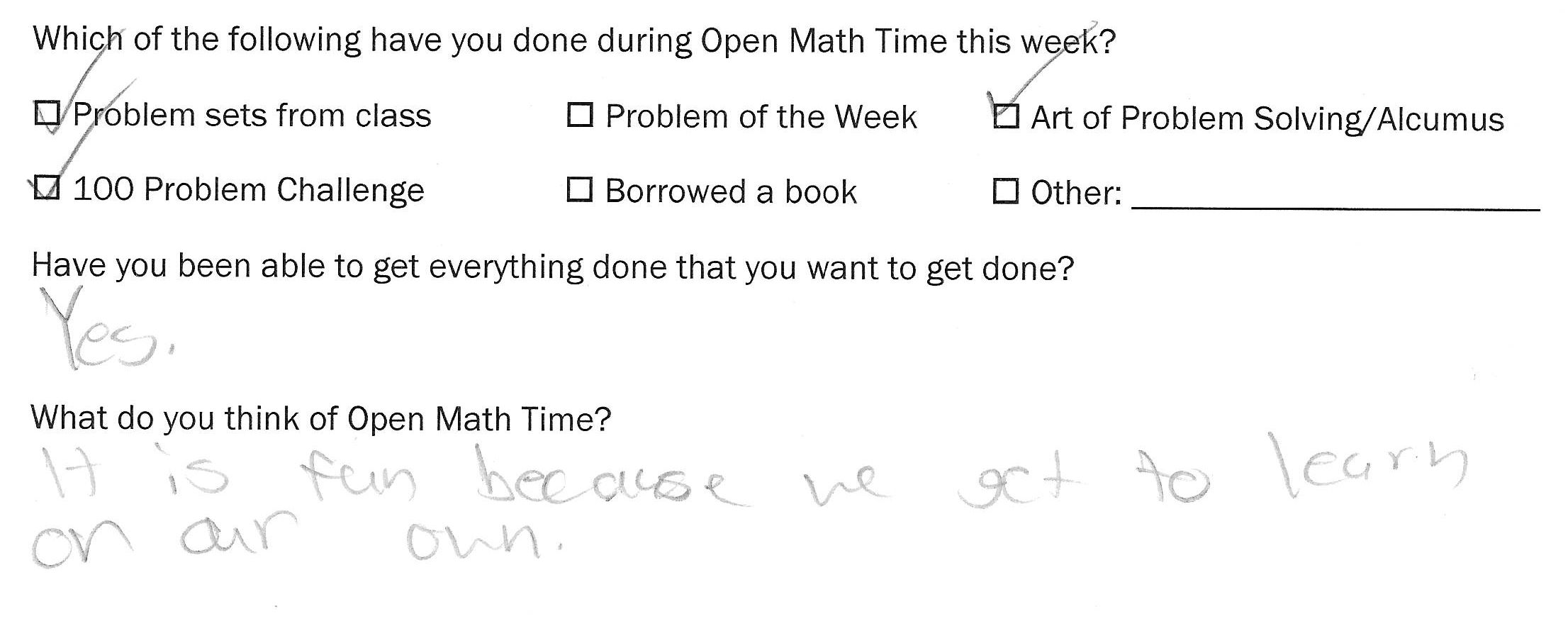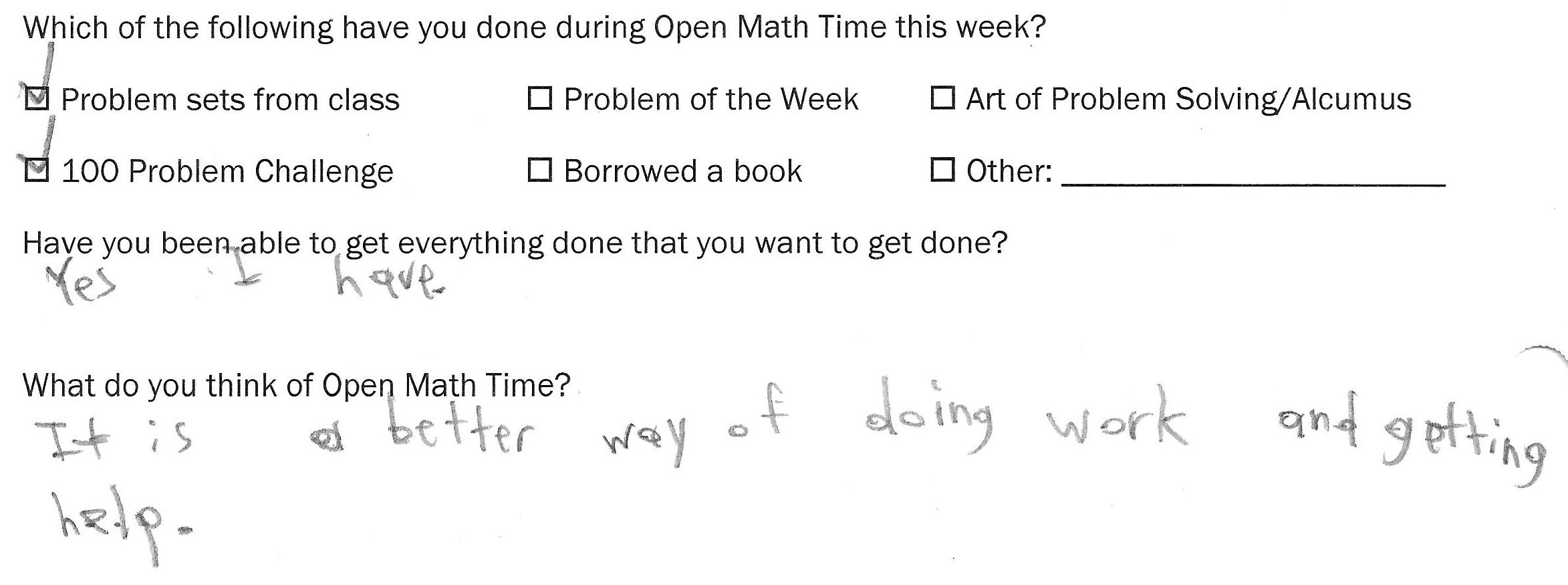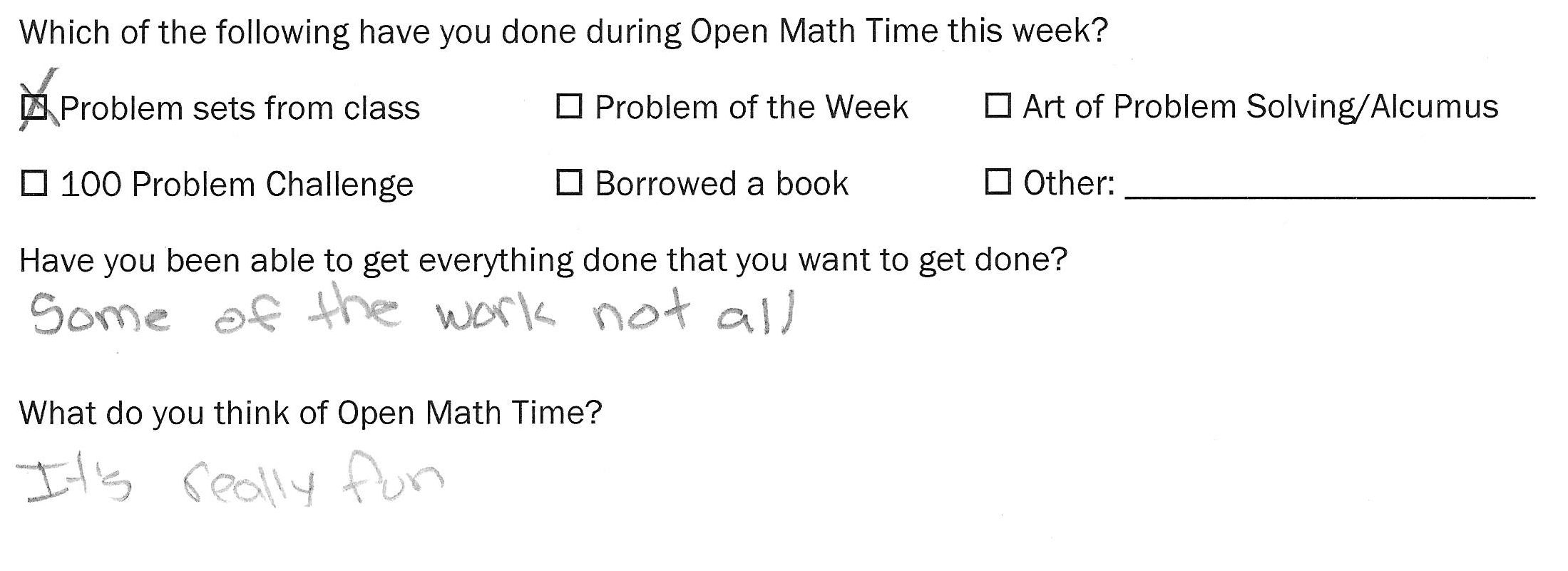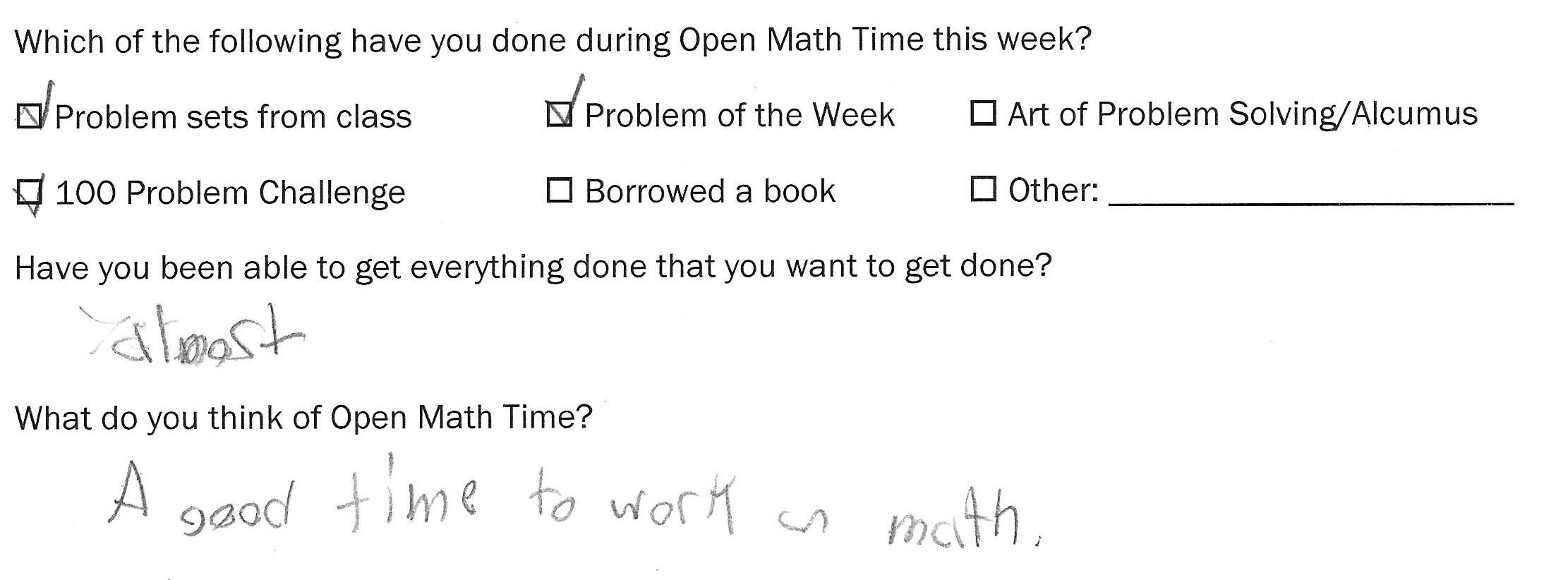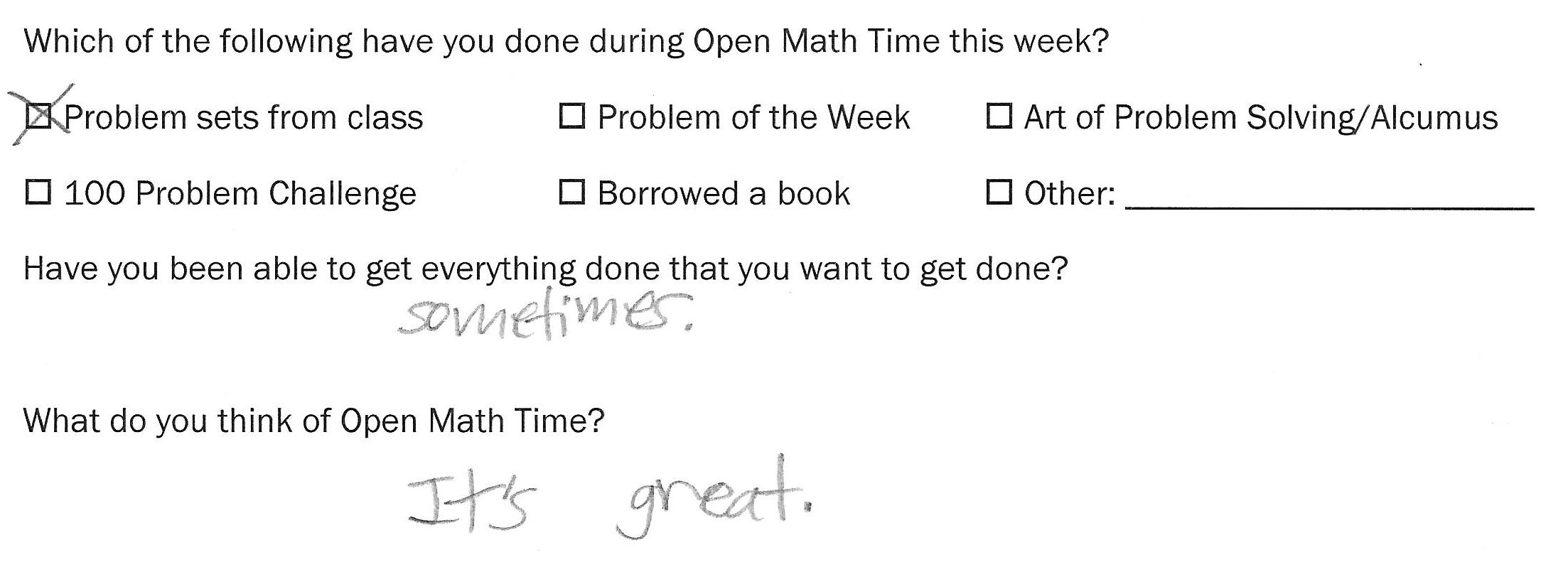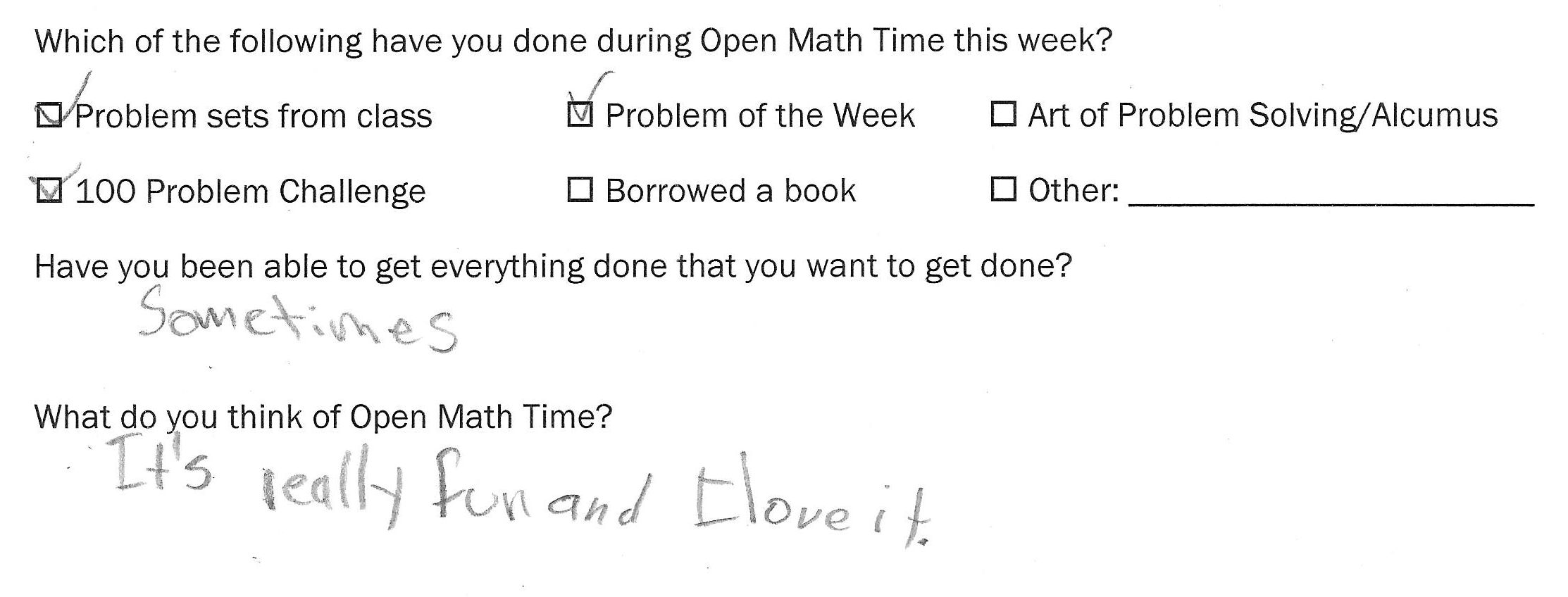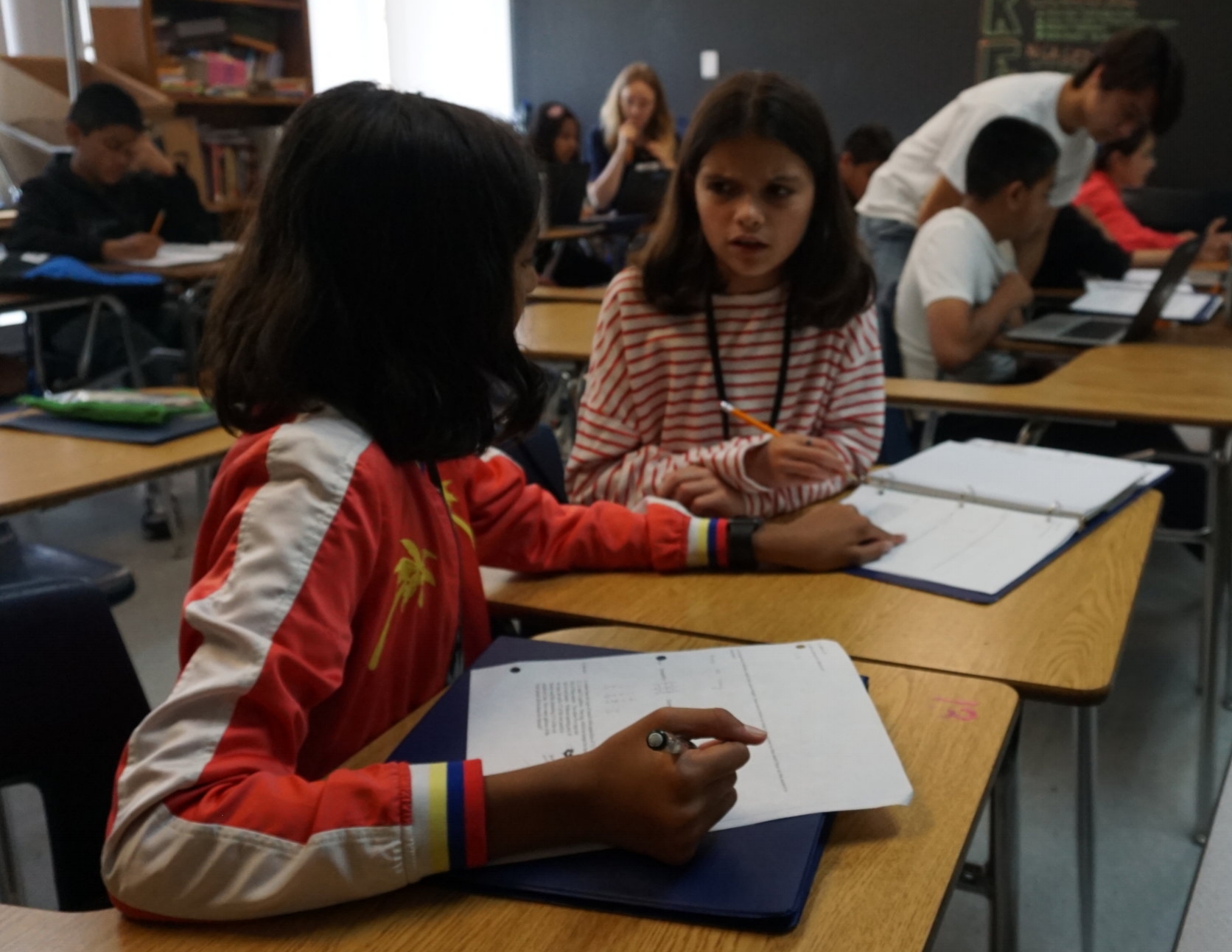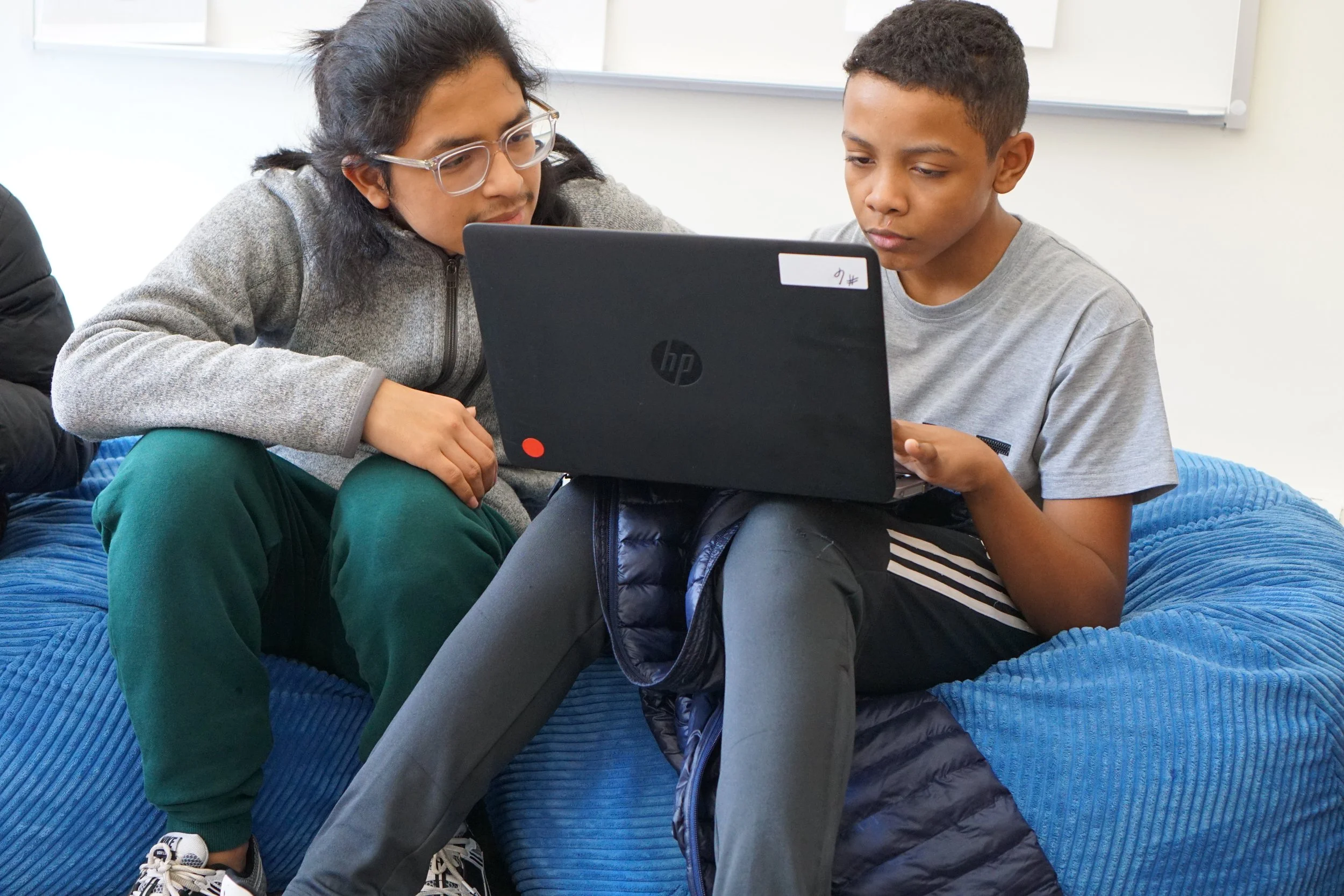
Welcome to the BEAM Blog!
Reflections on BEAM 6 LA
“Thank you for such a great experience at BEAM. BEAM has made this summer the best summer of my life. I won’t ever forget about BEAM and will keep on exploring math.”
Recently, we asked Jacob Castaneda, BEAM's Executive Director of LA Programs about the first summer of BEAM 6 Los Angeles. Here's what he had to say:
It’s hard to believe that the first summer of BEAM 6 LA is now complete. On any given day, you would see an assortment of activity: frustration and enthusiasm from problem solving, silliness during breakfast, curiosity during class, passion during Open Math Time. Above all, you could feel a strong passion for deep mathematical thinking. The program was a success, and I firmly believe that the thing that tied it all together was the students' camaraderie and the understanding that everyone was at the program to grow.
From left to right, Sharon, Daniel, Rihighna, and Valerie work on problem sets during OMT.
Clockwise from left: Emily L., Matthew, Adila, Galadriel (Counselor), Adib, Jarek working on one of the 100 Problems.
You could walk into any classroom this summer you would find students engaged in conversation around their mathematical thinking. I miss Open Math Time the most; I loved walking around and talking to groups of students collaborating on problems, having productive discussions and trying to explain their thinking to their peers.
Without fail, I could always find Sofia, Abigail A., Fernando, Oscar, Matthew, Adila, and Emily L. sitting with a counselor in the hallway outside of the trapezoid-shaped room, working on one of their problem sets or some other interesting puzzle.The music room had a high-energy group that liked to verbalize their solutions to problems, especially when twins Brissia and Rubi worked with Angel.
David (right) and Erick A. (middle) solved one of the challenge problems, so Meghan (left) writes their names on the poster.
Sometimes, Oscar would break from the trapezoid crew to work with Adib and Jarek on one of the remaining problems from the 100-Problem Challenge. Nearly half of the challenge problems were solved by groups of 2 or more students!
Faculty members also played an essential role in creating a strong community of mathematicians. Sam, our cryptography instructor, had students work in groups for weekly scavenger hunts whose clues were only readable through deciphering some code using a decryption technique learned in class. Diana had her math fundamentals class work in teams to analyze and interpret translations in Euclidean space. A math professor from Harvey Mudd visited our combinatorics class and was moved by the teaching strategy employed by Javier, the instructor. In that class, students were presented with a combinatorial pattern and asked to develop a conjecture and share it with their classmates, forming groups based on common reasoning and working to validate or invalidate others' conjectures.
Math relays, held every Friday afternoon, gave students a chance to work in teams to solve challenging math problems. Staff members selected which students worked together, giving students an opportunity to work with new people each week. It was an absolute joy to see mixed groups work together, often for the first time, and achieve success with the problems. The buzz during Relays was palpable, and students were encouraging towards one another, even when they weren't on the same team.
It's great to see the excitement about BEAM spill over into the start of the school year. We've received several submissions for the first challenge set and interest for pre-algebra classes. We expect to continue the mathematical momentum during our next math competition, set to take place in early November.
The unity among students was evident throughout the program. They supported one another in problem solving, combining their efforts to arrive at solutions. It was clear that the BEAM 6 community boosted the confidence of several students and left a lasting impression on their math journey.
But don’t take my word for it! Here’s what our summer students had to say about their experience at BEAM 6:
On the topic of Open Math Time, Rubi says "It was cool because I got to work with other people."
Rubi is a student at New Open World Academy.
"I feel more confident in myself."
Edilson is a student at Alliance Richard Merkin Middle School.
"I've gotten smarter & it's easier to work in groups."
Cherokee is a student at UCLA Community School.
"I achieved learning new things. I can apply the things I learned here in school and maybe even teach my friends at school about the things I learned."
Jamie is a student at the New Open World Academy.
"At first, I didn't felt [sic] like going to BEAM but then you supported me and I got accepted. Now I feel like BEAM is a family to me. Thank you."
Daniel is a student at Young Oak Kim Academy.
What do 6th graders love about BEAM? Open Math Time!
With BEAM 6 Los Angeles' first two weeks in the book, we thought we'd take a minute to talk about one of the students' favorite parts of the day: Open Math Time! Every day at BEAM 6 includes four hours of academics: two hours of class and two hours of Open Math Time (OMT). During OMT, students choose from a menu of options, or propose their own work. They can do basically anything mathematical! Students can work individually or in groups; as long as the time is productive, any arrangement is fair game! OMT exists for a number of reasons:
Zavier (BEAM '11), right, supports students in a BEAM 6 LA classroom.
- BEAM classes don't assign homework, because it just doesn't seem right for a summer program! But, it's important to practice new ideas to really learn them. So, students use some of their OMT for short, required Problem Sets (PSets) from each class.
- BEAM believes in flexibility and choice. We want students to build the best possible summer for themselves!
- Middle schoolers are learning a lot about themselves. Students may never have been given the flexibility to choose their groupings or tasks. This is a huge opportunity for growth.
- Strong mathematicians become stronger by spending more time on math. By sharing with students the joy of self-paced, self-directed learning, we give students the tools they need to challenge themselves to learn independently.
Ever since our first summer of BEAM 6, students have raved about OMT. It becomes many students' favorite part of the day. And our BEAM 6 LA 2018 students are no different! Here are some reviews from our early program survey:
As you can see from the check boxes. students have a suggested menu of options for how to spend their OMT. Most students chose the following options:
PSets From Class
Every member of the faculty gives students about 15 minutes worth of extra work at the end of each class in the form of problem sets. Problem sets (PSets) are designed to help students practice and solidify new skills, extend understanding, and explore curiosity. For example, a student in a KenKen class might solve a more challenging puzzle, while a student learning to program in Python might add a new command to the program they're writing. Students working on PSets can head to their teacher's classroom to chat about the work and ask for support.
Want a flavor of a PSet? Here are some sample problems from two of our classes:
Exponents: The Super-Powers of Numbers
Find a number with five or more digits, all 0s and 1s, that is 7 in Z11 (in other words, it has a remainder of 7 when divided by 11).
Voting: How to Run a Country
A group of 4 friends want to do the same activity during activity time. Their options are to do any of the following: soccer (S), drama (D), frisbee (F), board games (B), or painting (P) and they decide to use Borda Count to decide the activity they should do. Consider the table of preferences below:
a) 5 points are assigned to a 1st place vote, 4 points to a 2nd place vote etc. What activity is the Borda count winner in this instance? (Make sure to give the Borda scores to justify your answer).
b) Is it possible for only one person to changing their ranking (in any way) so that painting is the only Borda count winner? If so, give the person and their new ranking and the new Borda counts of each alternative. If it is not possible, thoroughly explain why it is not possible.
100 Problem Challenge
Students work on a problem during OMT with their counselor Paula, right under the 100 problem board.
This is exactly what it sounds like: a hundred problems selected by Dan Zaharopol (BEAM Founder and the Executive Diretor of the Art of Problem Solving Initiative, Inc.) to challenge the students mathematically and bring them just to the edge of mathematical proof. There’s a big board with 100 spaces for the 100 problems, and we write in the names of students who’ve completed problems. If all 100 are solved before the end of week 5, the entire program wins a prize!
Try out a sample problem for yourself:
Problem 1
A friend tells me that she has three children, and that if you multiply their three ages you get 72. “I don’t have enough information to figure out how old they are!” I reply.
“All right,” she says, “if you add their ages, you get the street number from my address.”
I know where she lives, so I do some calculations. “I still don’t know how old they are!” I reply.
“Well,” she replies, “the oldest is really good at chess.”
Now I know how old they are. How old are her children, and what is her street address?
The state of the 100 problem challenge at the end of week 1.
Art of Problem Solving/Alcumus
Students, hard at work!
Another major goal of BEAM is that our students (new to enrichment math) have access to the same resources and opportunities that other middle schoolers all over the country already have! So, we connect them all with accounts for the Art of Problem Solving (AoPS), and encourage students to start with Alcumus. Alcumus is a free, self-paced tool that works students through math skills, starting at pre-algebra. It's fun and it's something students can use for years to come!
Becoming familiar with AoPS and Alcumus know will have major benefits to BEAM 6 alums during 7th grade, as AoPS offers a free, online pre-algebra course to any BEAM 6 alum who completes the Alcumus pre-work to demonstrate to BEAM that they plan to take the course seriously. And as our students age, we sign individual students up for AoPS classes whenever they need an enrichment boost, and are looking to challenge themselves (the combinatorics and number theory classes are a particular hit!).
We're so glad students are enjoying OMT and the rest of BEAM 6. It's clear that BEAM 6 Los Angeles is off to an incredible start! Want to read more? Check out what our own Executive Director, Dan Zaharopol, had to say on his blog:
A Day in the Life of BEAM 6
It's Friday which means we are nearly 20% of the way finished with BEAM 6 Los Angeles 2018. Where did the time go??
So, what is a week like at BEAM 6? Each day features:
- Breakfast
- Morning class
- Open Math Time
- Activities
- Lunch
- Afternoon class
- Open Math Time
- Activities
Let's dig deep on each of those blocks!
The day begins with a balanced breakfast, served a la carte in the cafeteria.
Academics
Then, it's off to class! Students at BEAM take four classes, one each in the following tracks: Logical Reasoning, Math Fundamentals, Math Team Strategies, and Applied Math. At the beginning of the summer, students selected which version of each class they wanted to take. Their options were:
- Logical Reasoning:
- KenKen Puzzles and More
- Ultimate Brain Puzzles!
- Elementary, My Dear!
- Liars, Truthtellers, and More
- Math Fundamentals:
- Fractions and Food
- Exponents: the Super-Powers of Numbers
- Patterns, Lines, and Number Rules
- Applied Math:
- Introduction to Cryptography
- Voting: How to Run a Country
- Computer Programming
- Math Team Strategies:
- Using Patterns to Solve Problems
- Counting Without Counting and Fantastic (Number) Beasts
- Words, Meet Numbers: An Algebra Story
Don't those sound fun? How did students choose?? Each instructor gave a course description and a sample problem! Here's one set to consider!
Elementary, My Dear!
Course Description:
Ever wonder how detectives like Sherlock Holmes solve complicated mysteries? It's all in the details. In this class we'll explore the different techniques used to solve complicated riddles and how to apply them in tough mathematical problems.
Sample problem:
Mr. Red, Mr. Blue, and Mr. White meet at a restaurant for lunch. Under their coats they are wearing either a red, blue, or white shirt. Mr. Blue says, “Hey, did you notice we are all wearing different colored shirts from our names?” The man wearing the white shirt says, “Wow, Mr. Blue, that’s right.” Can you tell who is wearing what color shirt?
Open Math Time
One of the big goals of BEAM is that students spend time doing math they enjoy! So, during Open Math Time, students get a menu of options they can pursue. We encourage students to keep going back to this menu of options during 7th grade, whenever they're looking for a challenge! During Open Math Time, students might:
- Reinforce learning from their classes with Problem Sets
- Try out the weekly challenge problem
- Work on the 100 Problem Challenge (more on that later!)
- Explore the Art of Problem Solving, probably by checking out Alcumus
Students can work independently, or in groups! It's really up to what makes each student the most productive.
Activities
Morning activities last for the whole week! They're a time to learn new skills or spend a whole week on a passion. This week's options are:
- Board Games: Old classics and new!
- Decorate Your Binder
- Watch the World Cup: Watch live and old soccer games!
- Learn to Solve A Rubik’s Cube
- Rooftop FUN: Steal The Bacon and Sharky Sharky
- Learn to Play Settlers: A trading and building board game set in the mythical world of Catan!
- Learn Dominion: A strategy card game where each time you play it’s different!
Afternoon
Then, it's on to lunch (buffet catering from local restaurants), the next class, the next block of Open Math Time, and afternoon activities, which change every day.
All in all, it's a busy, exciting day, and we'll have much more to share over the upcoming weeks!



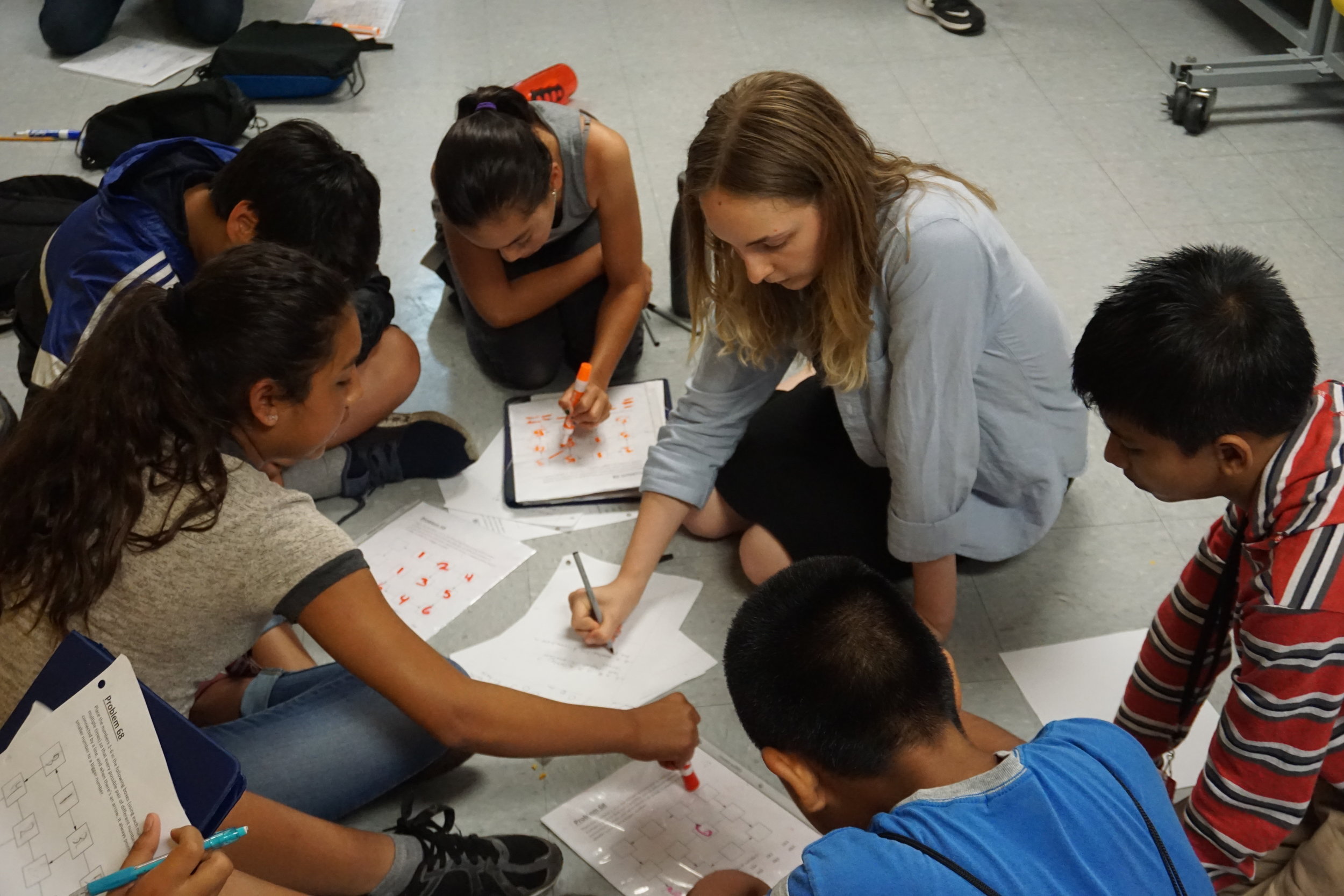










!["At first, I didn't felt [sic] like going to BEAM but then you supported me and I got accepted. Now I feel like BEAM is a family to me. Thank you."Daniel is a student at Young Oak Kim Academy.](https://images.squarespace-cdn.com/content/v1/561a6eede4b0448989c88951/1536615478385-EES7UQE1YXJJ7MF8UV5L/Daniel+P+Quote.jpg)


